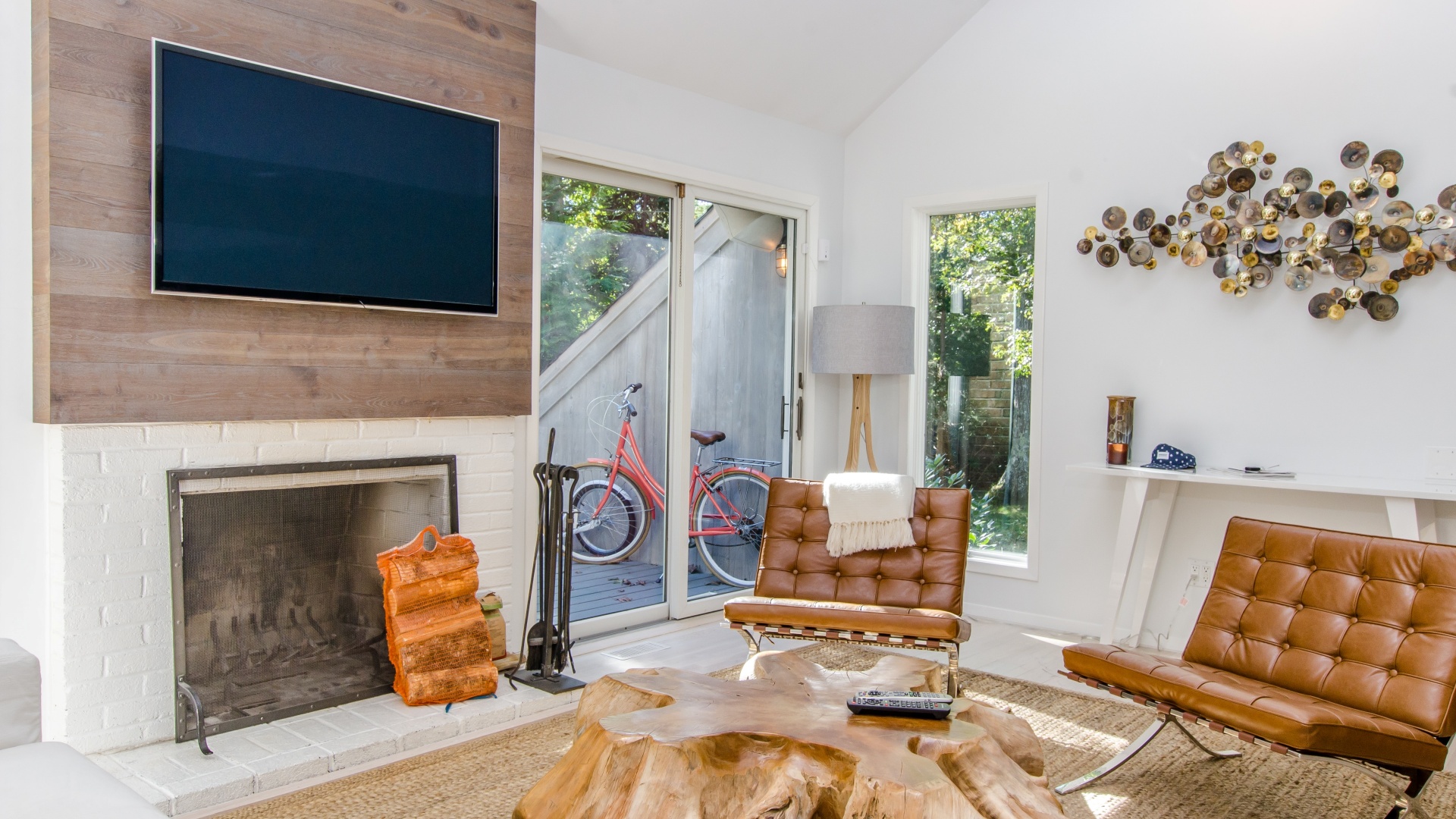
In an era where environmental sustainability is increasingly becoming a pressing concern, individuals need to take steps toward reducing their carbon footprint. One effective way to achieve this is by integrating sustainable power solutions into our homes. By harnessing the power of renewable energy, we can not only reduce our reliance on fossil fuels but also contribute to a cleaner and greener future for our planet. In this blog post, we will explore the various ways in which you can transform your home into an eco-friendly haven.
Solar Power: Embrace the Sun’s Energy
One of the most popular and readily available sustainable power solutions is solar energy. Installing solar panels on your rooftop allows you to harness the abundant power of the sun. Solar panels convert sunlight into electricity, which can be used to power your home’s appliances and lighting. Additionally, any excess energy generated can be stored in batteries or fed back into the grid, further reducing your reliance on non-renewable sources.
To get started, consult a professional solar installer who can assess your home’s energy needs and design a customized solar power system. While the initial cost of solar installation may seem high, solar panels are a long-term investment that can significantly reduce your electricity bills and even provide a return on investment over time. Just remember to do your research and get multiple quotes from reputable installers to ensure you’re getting the best value for your investment.
Wind Power: Embrace the Breeze
If your property has ample space and is in a windy region, wind power can be a viable option. Small wind turbines can generate electricity by harnessing the wind’s kinetic energy. While they may not be suitable for urban areas due to size and noise considerations, rural properties can benefit from this sustainable solution.
Before considering wind power, it is crucial to assess the wind resource on your property. Conduct a wind survey to determine the average wind speed and consistency. You should also check for any local regulations or permits required for installing a wind turbine. A professional wind energy expert can guide you through the process and help you select the right turbine for your needs.
Geothermal Energy: Tap into the Earth’s Heat
Geothermal energy utilizes the constant temperature of the Earth to heat and cool your home. By installing a geothermal heat pump system, you can tap into this sustainable power source. These systems work by extracting heat from the ground during winter and transferring it indoors, while in the summer, they remove heat from your home and transfer it back into the ground.
Geothermal systems are highly efficient, as they don’t rely on fossil fuels for heating or cooling. While the installation cost may be higher compared to conventional HVAC systems, geothermal systems offer long-term energy savings and reduce greenhouse gas emissions.
Smart Home Technology: Optimize Energy Consumption
In addition to integrating renewable energy sources, incorporating smart home technology can further optimize your energy consumption. Smart thermostats, for instance, can automatically adjust the temperature based on your preferences and occupancy patterns, leading to energy savings.
Smart lighting systems can also be programmed to turn off when not in use or adjust brightness levels based on natural light availability. By investing in energy-efficient appliances and using power strips to eliminate vampire power (standby power consumed by devices when not in use), you can further reduce energy waste.
Energy Storage: Harnessing Power Around the Clock
To maximize the benefits of renewable energy sources, it’s crucial to consider energy storage solutions. Battery storage systems allow you to store excess energy generated during peak production times and use it when the demand is high or when renewable sources are not actively producing.
Energy storage not only helps you become self-sufficient but also ensures a continuous power supply during grid outages. The advancements in battery technology have made energy storage more affordable and efficient, making it an attractive option for homeowners looking to integrate sustainable power solutions.
Rainwater Harvesting: Embrace Nature’s Gift
Rainwater harvesting is a sustainable practice that allows you to collect and store rainwater for various uses, such as irrigation, toilet flushing, and laundry. By installing a rainwater harvesting system, you can reduce your reliance on municipal water sources and contribute to water conservation efforts.
The process involves directing rainwater from your rooftop into storage tanks or underground reservoirs. It is essential to consider the local climate, rainfall patterns, and the size of your property when designing a rainwater harvesting system. Implementing proper filtration and purification methods will ensure that the harvested rainwater is safe for its intended purposes.
Energy-Efficient Building Design: The Foundation of Sustainability
When constructing a new home or renovating an existing one, incorporating energy-efficient building design principles can significantly enhance the sustainability of your living space. By focusing on factors such as insulation, ventilation, and orientation, you can minimize energy consumption and optimize thermal comfort.
Start by ensuring proper insulation in walls, roofs, and floors to prevent heat transfer and reduce the need for heating or cooling. Utilize energy-efficient windows and doors that provide adequate natural light while minimizing heat gain or loss. Additionally, consider passive design techniques like strategic shading and proper air circulation to optimize indoor temperatures.
By combining energy-efficient building materials, well-designed insulation systems, and thoughtful placement of windows and doors, you can create a home that maximizes natural resources and minimizes energy waste.
Tips for Successful Integration
Integrating sustainable power solutions into your home requires careful planning and implementation. Here are some essential tips to ensure a successful transition towards a greener home:
- Conduct an Energy Audit: Before embarking on any sustainable power project, conduct an energy audit of your home. Identify areas of energy waste and prioritize improvements. This will help you determine the most effective and efficient solutions for your specific needs.
- Seek Professional Guidance: Engage with experts in the field of sustainable energy solutions. They can provide valuable insights, assess the feasibility of different options, and guide you through the entire process. Professional advice will ensure that your chosen solutions are optimized for maximum efficiency and long-term benefits.
- Consider Financial Incentives: Research local and national programs that offer financial incentives for adopting sustainable power solutions. Tax credits, rebates, and grants can significantly offset the upfront costs and make the transition more affordable. Explore these options to maximize your savings.
- Maintenance and Monitoring: Regular maintenance and monitoring are crucial to ensure the optimal performance of your sustainable power systems. Schedule periodic checks, cleanings, and inspections to keep your solar panels, wind turbines, or geothermal systems operating efficiently. Monitor energy usage to identify any areas of improvement and adjust your consumption patterns accordingly.
- Educate Yourself: Stay informed about advancements in sustainable power technologies and best practices. Attend workshops, seminars, and industry conferences to expand your knowledge and network with like-minded individuals. Being well-informed will empower you to make informed decisions and stay ahead of emerging trends.
- Spread the Word: Share your experiences and knowledge with others. Inspire your friends, family, and community members to embrace sustainable power solutions. By creating awareness and encouraging others to follow suit, you can amplify the positive impact on the environment and foster a culture of sustainability.

Integrating sustainable power solutions into your home is a significant step towards reducing your carbon footprint and contributing to a greener future. By harnessing solar power, wind power, and geothermal energy, and utilizing innovative home technology and energy storage, you can create a sustainable and energy-efficient living environment.
Remember, the path to a greener home starts with education and research. Consult with professionals in the field to assess the feasibility and cost-effectiveness of different sustainable power solutions for your specific circumstances. Embrace the opportunity to make a positive impact on the environment while enjoying long-term savings and a more sustainable lifestyle. Together, we can create a brighter and greener future for future generations.











